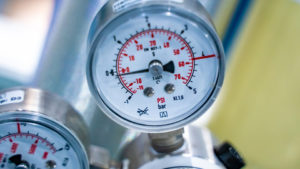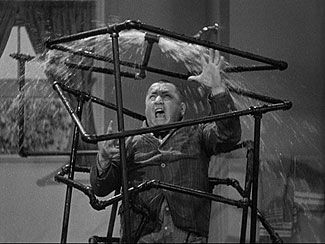Low Water Pressure In Your Home: Four Possible Causes In South Jersey

Weak showers, faulty faucets, and a washing machine leaving soap on your clothes: Low water pressure in your South Jersey home can be a big problem without an apparent cause.
Now that we’re spending even more time than usual at home, you’re more likely to notice — and get frustrated by — that you’re not getting enough water to your taps and appliances.
Fortunately, you may be able to find what’s causing it with a little sleuthing around the house. And, if you’re lucky, it’s an easy fix you can handle yourself.
Other times, you’ll need a professional — and, yes, sometimes it gets costly. But, start with these first steps to help with a diagnosis. If nothing else, you’ll give your plumber the best information to get things moving. And, you’ll have a better idea of what to expect.
If you’re in Ocean City, Avalon, Marmora, or anywhere in South Jersey, call or email us today if you have any questions about the plumbing in your home. With nearly a century of experience serving Atlantic and Cape May counties, you can be sure we’ll help keep your home in great shape.
Common Causes of Low Water Pressure in Your Home
Four things to check for when you have low water pressure are:
-
Main Shutoff Valve is Partially Closed
-
Clogged or Broken Fixtures
-
Broken or Failing Pressure Regulator
-
Clogged, Corroded, or Leaky Pipes
We’ll start with the two you can fix on your own.
Main Shutoff Valve is Partially Closed
The main shutoff valve works like any other faucet in your home: You turn it on, and water comes through. However, the difference here is that you should have it all the way open all the time.
This way, water’s always flowing into your house. It guarantees something comes out of the tap when you turn a faucet or use a dishwasher or washing machine.
Unless you’ve had problems recently, odds are no one has touched it. But, there’s always the chance someone’s messed with it — especially if it’s easily accessible.
And, it’s an easy fix, and so we’ll start by ruling it out.
Go to your water main at the spot where water enters the house. If you have a basement, it’s in there. Or, check a closet on the first floor. It’s most likely at the front of the house because the pipes come in from under the street.
You’ll see either a round faucet like the kind on an outdoor house fixture. Or, there’s a lever. That’s the shutoff valve.
There’s no trick to making sure it’s open. Just turn it all the way! Go counterclockwise until it stops. Don’t force it!
If it doesn’t move, you’re fine. But try this first and see if it makes a difference.

Clogged or Broken Fixtures
Next, check your fixtures and appliances. Do you notice low pressure throughout the house, or just in a few spots?
Faucets use aerators — little screens that help the faucet run without using as much water. But, that small piece can get clogged.
Similarly, the valve on your shower can clog. In both cases, the cause is often mineral buildup in your water. Either way, you can usually fix this yourself.
Start with the faucet. Carefully remove the ring at the end of a tap, and you can get to the small screen. If it looks clogged, it is! Clean it out and re-assemble the fixture. See if that does the trick.
You can do the same with the shower, but how to disassemble depends on the exact model. For the most part, though, it’s intuitive to figure out how to unscrew it.
Again, clean it out and check to see if that does the trick.
Broken or Failing Pressure Regulator
Next, head back down to the water main. Is there a valve with a dial on it? If so, that’s the pressure regulator. Not all homes have them. But, if yours does, that component is doing what the name says: regulating the amount of water pressure coming in from outside.
If this breaks or starts slipping, you’ll notice the change in your house instantly.
Checking this is pretty easy. Start by turning on the faucet that’s furthest from the gauge. That could be your kitchen on the other side of the house or a bathroom on the second floor.
While it’s running, confirm the water pressure is weaker than you want it. Then, leave it on and check the gauge. If it’s reading less than 40 PSI, you’ve solved the mystery!
Now, if you’re handy, you can get a new one and replace it. But, don’t attempt this unless you know what you’re doing — or if you’re in the mood to re-enact a classic Three Stooges moment.
Clogged, Corroded, or Leaky Pipes
And, here we are at the doom-and-gloom part of our program: Problems with the pipes. These range from clogs to corrosion and leaks. They’re a little tough to spot, and even tougher to fix. You’ll definitely need a professional.
First, do a visual inspection of all the piping you can see. Start with where it enters your home and go from there. Get in the crawl space with a flashlight, if possible.
Look for any signs of excess wear, corrosion, splits, or other damage. Ensure there’s no moisture outside the pipes, along any walls, or on the floor or ground.
Also, keep an ear out for bubbling, whistling, or clanging from the pipes or toilets and sinks. These can clue you into a water main leak.
But, just because you didn’t find anything doesn’t mean the pipes are okay. In particular, you could have a water main leak. That’s when water is seeping out of the pipe connecting your main to the city lines.
These don’t last forever, and as they degrade, they can spring holes and leaks that you’ll never see because they’re underground.
Plumbing and Emergency Plumbing Repairs in South Jersey
If you can’t fix the low water pressure in your home, or can’t find its cause, don’t just put up with weak showers and soapy clothes! Instead, call Broadley’s today and let us get to the bottom of the problem.
After all, it may be more than an inconvenience — a leak or similar issue can result in a lot of water damage later on.
Call or email us today for an in-person visit or virtual conference to start. We’ll get everything working again as soon as possible.








